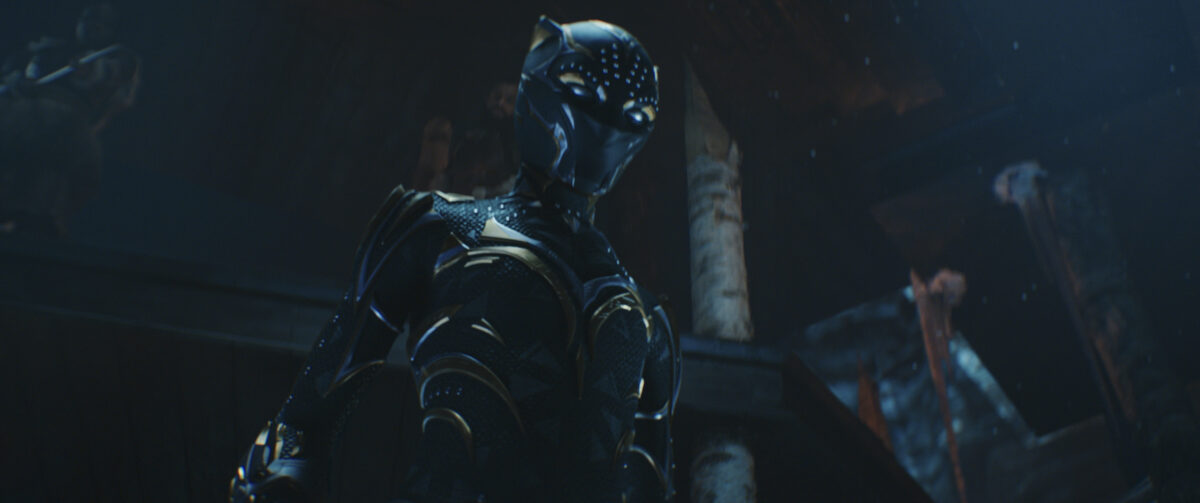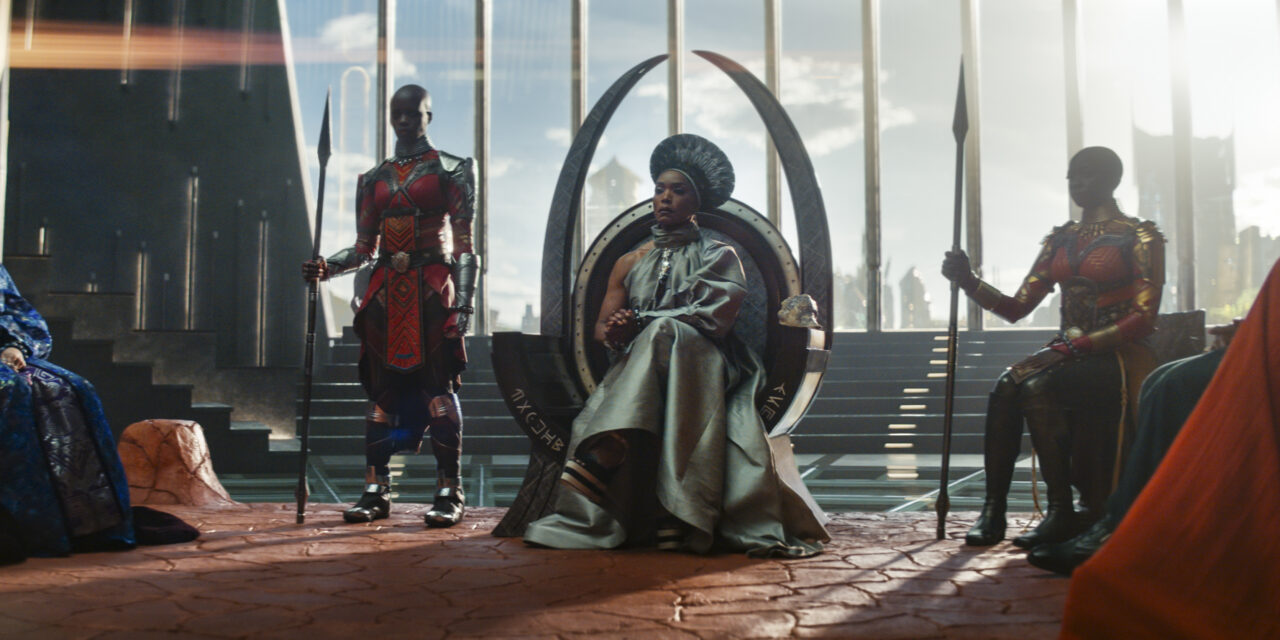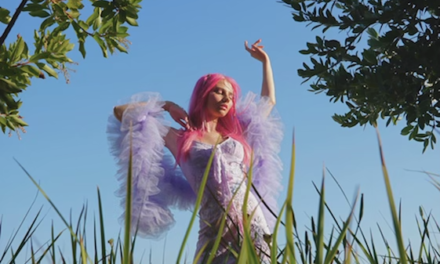The connective tissue of Marvel’s early phase four projects is the devastating aftermath of “the blip.” Lovers, friends, territorial borders, and even time have radically changed in that universe. However, there’s an extra layer of heaviness when real-life tragedy leaks into an art form. Black Panther: Wakanda Forever has a lot of things to say and conveys its many themes in a very heartfelt and intelligent way. First, the film is an emotional eulogy and celebration of the late great Chadwick Boseman. Boseman’s spirit and contributions to the Marvel Universe are felt heavily throughout the runtime. The first moments of Wakanda Forever reckon with the enormity of King T’Challa’s death — both with integrating African culture as an overall celebration of his life and the sorrow of those he’s left behind.
Director Ryan Coogler allows you to sit with these moments in silence, sadness, and memories of happiness of what Boseman and this character brought to the world. As we advance in a slight time jump, the ramifications of Wakanda’s entry into the world take shape. Other nations know of the nation’s abundance of vibranium and also the loss of T’Challa. Some entities think of using this as an imperialistic opportunity to strip the technology from Wakanda. But, alas, the nation is just as strong through its Black matriarchal lineage.
The first Black Panther dealt with the ramifications of King T’Chaka’s death in Captain America: Civil War and the male succession to the throne. Wakanda Forever shifts its focus to center on the strength and grief of its Black female characters. Paired with some terrific performances from Letitia Wright, Angela Bassett, Lupita Nyong’o, and Danai Gurira, you feel the full array of people trying to be strong in times of uncertainty. Coogler and writer Joe Robert Cole can give each woman the space to show how that affects them differently.
Queen mother Ramonda (Bassett) has to balance leading a nation against threats, being a daughter to her lone child Shuri (Wright), and dealing with the losses of her husband and son. Shuri is one of the most intelligent people in the world — even with all that knowledge, she couldn’t stop the sting of death from taking someone from her again. Shuri works to the tune of obsession and rejects tradition to reason with these feelings. Nakia (Nyong’o) is mourning the loss of a lover and life as she knows it. Okoye (Gurira) continues to lead the Dora Milaje, but the film gives her the platform to show there’s more to the person than being a soldier. M’Baku’s character (Winston Duke) is not seeking to be the next leader — instead, he elects to be a steady figure of stability for a hurting nation. Coogler devotes enough time to each character and intertwines their storylines for it all to matter equally.

A scene from Marvel Studios’ Black Panther: Wakanda Forever. Photo courtesy of Marvel Studios. © 2022 MARVEL.
To broaden the question of conquest and the preservation of culture, Coogler introduces the character of Namor (Tenoch Huerta) and the underwater community of Talokan. Wakanda’s decision to open itself to outside nations has put Talokan in a predicament. Namor has his own reservations about this, considering the persecution and attempted genocide of the indigenous people he comes from. Talokan, like Wakanda, uses vibranium as a sustaining life source — Coogler and Robert Cole implement the richness of Mayan history to bridge the mineral’s usage in two distinct ways. Ludwig Göransson returns to provide two distinct and powerful scores for both nations. For many of the ways Talokan and Wakanda are like, the emotional makeup of their leaders is what eventually makes them come into conflict.
Huerta plays Namor with solid confidence imbued within the character. While he is the primary antagonist in the film, there’s an inherent reason people might level with his viewpoint. In this world, Wakanda has continued the path of unstable diplomacy — knowing nations could turn them on at any moment. Talokan is highly aware of what the world can do and instead seals itself from that potential danger. Wakanda Forever had the challenge of building another world while diving into others. With the slightly over two-and-a-half-hour runtime, there is a lot of jumping around settings. Towards the film’s latter half, it can get disorienting. However, the film encompasses beautiful CGI shots of Talokan’s aquatic landscape and its archaeological history through carvings and artwork.
Given all the thematic beats present in the film, Wakanda Forever still has the prototypical skeleton of superhero films before it. They are various action scenes, including car chases, hand-to-hand combat, and a wide variety of quick-set pieces. Namor himself has a unique skill set, being able to breathe underwater, walk on land, the ability to fly, and a powerful punch to boast. His quest for vengeance latches itself to Shuri’s journey, and they manifest in different ways. The most powerful thing within Wakanda Forever is the ability to embrace grief in all its forms. You can’t replace Chadwick Boseman, no matter how much you would like to. His fingerprints are all over this film. The film fights against Marvel’s own decree to look ahead. Grief itself doesn’t operate like this. For a very forward-thinking universe, it’s nice that Wakanda Forever doesn’t allow the following story (even though the threads are there) to hijack its message.
For all the gadgets, herbs, and upcoming technologies this world brings, the strength of Wakanda Forever lies in the multi-faced portrayal of its Black women characters. They are warriors, leaders of countries, and scientists — but also human beings that experience wide ranges of emotions (and should be allowed to). Thankfully, this film moves off the beaten path of MCU standards and allows its brilliant actress ensemble to explore the weight this film carries fully. Yes, Wakanda Forever is another entry in the seemingly never-ending parade of content within these phases. But audiences will find tenderness and acknowledgment to those we have lost, which may make it okay to let our burdens down and feel.
Photo Credit: Disney/Marvel













